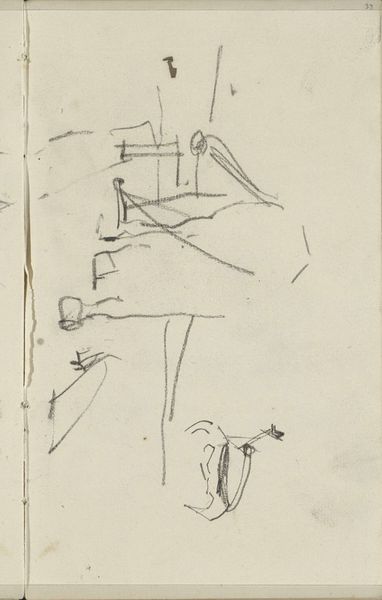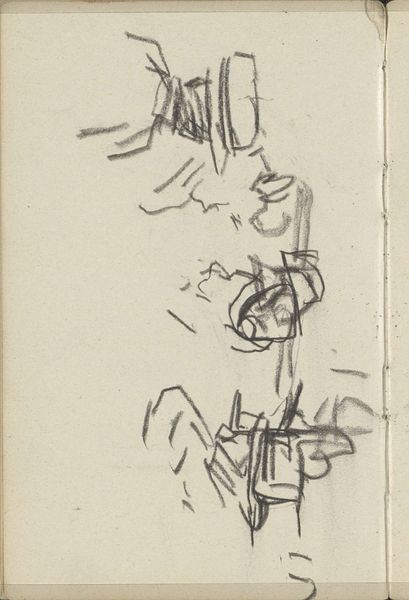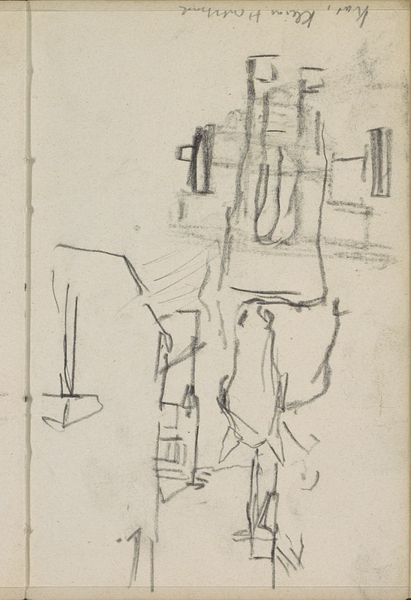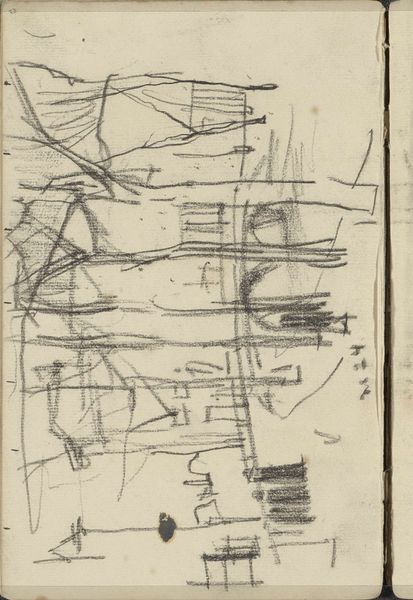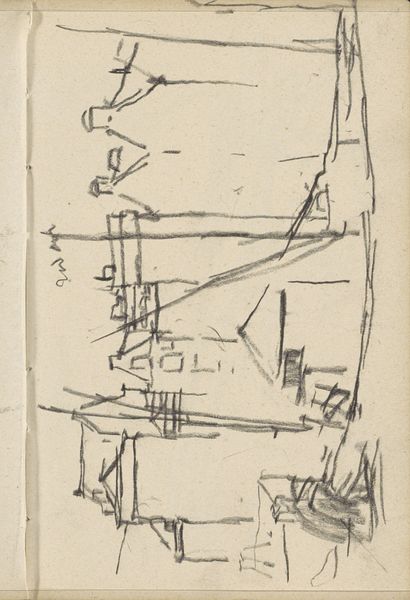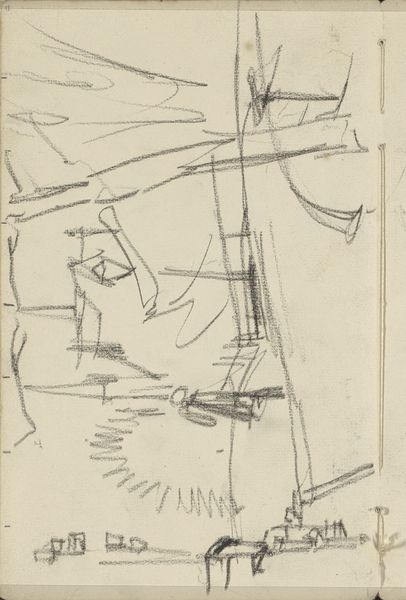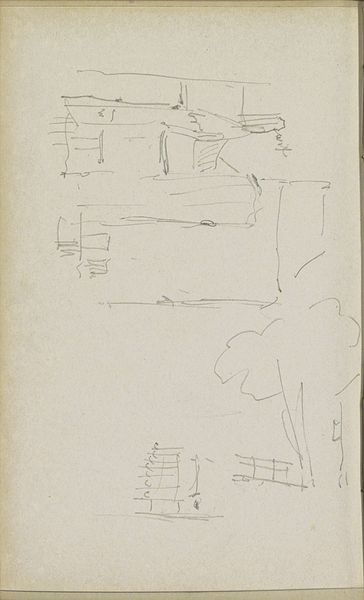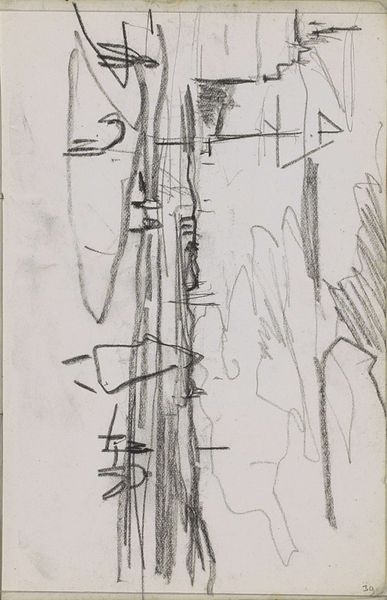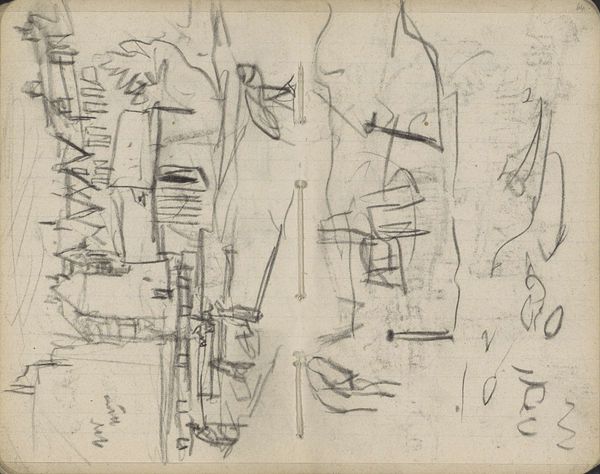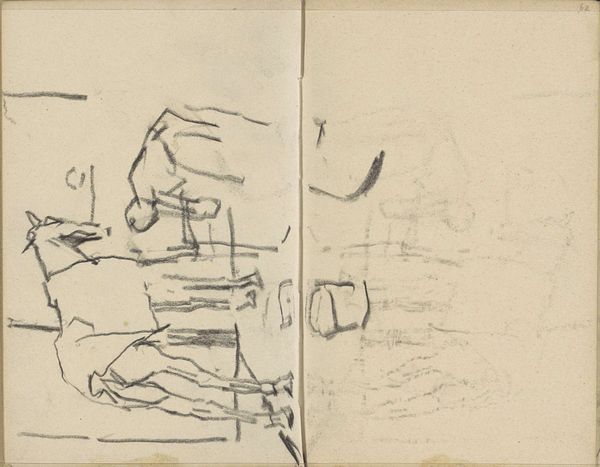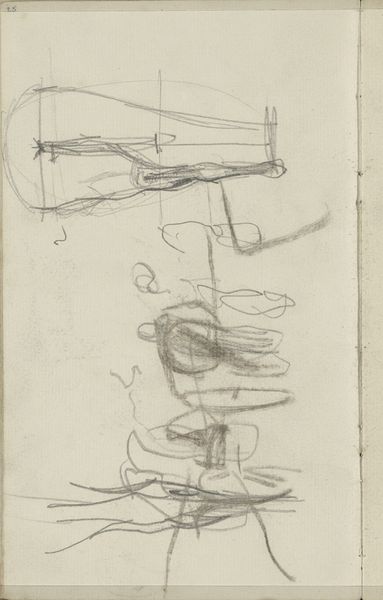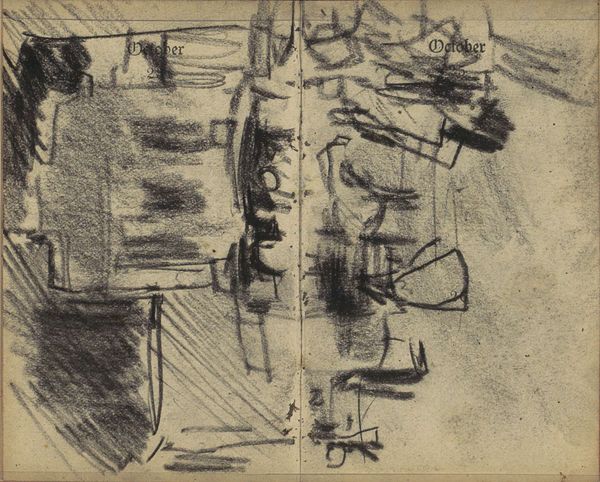
Straat in aanbouw in de Helmersbuurt te Amsterdam c. 1892 - 1923
0:00
0:00
georgehendrikbreitner
Rijksmuseum
Copyright: Rijks Museum: Open Domain
Editor: This graphite drawing by George Hendrik Breitner, titled "Straat in aanbouw in de Helmersbuurt te Amsterdam" and dated between 1892 and 1923, is a whirlwind of lines. It almost feels unfinished, but there's a dynamism to it that captures the chaotic energy of a street under construction. What do you see in this piece? Curator: I see Breitner engaging with the rapid urbanization of Amsterdam at the turn of the century. Look at the gestural marks. They're not just sketching a scene; they’re evoking the societal upheaval, the disorienting speed of progress, and the often-overlooked human cost of development. Consider the Helmersbuurt: a neighborhood transforming, displacing communities. Editor: So, you see the sketchiness as intentional, reflecting social disruption? Curator: Exactly! Breitner's impressionistic style here becomes almost a form of social commentary. The lack of precise detail mirrors the incomplete promises of modernity, particularly for the working class navigating these changing urban landscapes. What isn't represented is as important as what is. Editor: That's fascinating. I was initially drawn to the pure aesthetic of the drawing, but you've given me a whole new perspective by situating it within its historical and social context. Curator: Art rarely exists in a vacuum. By considering the societal forces at play, we can understand how artists like Breitner were responding to—and, perhaps, even challenging—the status quo. What will you consider as you view other impressionist works? Editor: To look for what's hidden beneath the surface, to connect the artist's choices to the wider social and political conversations of their time. Curator: Precisely! This dialogue is important to unpack histories that we may otherwise forget or leave untold.
Comments
No comments
Be the first to comment and join the conversation on the ultimate creative platform.
